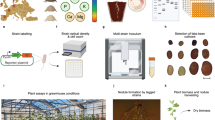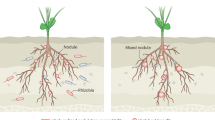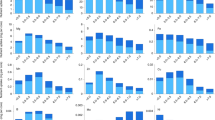Abstract
THE importance of legumes as symbiotic nitrogen-fixers in the pastures of temperate regions is generally recognized, and considerable data are available to show the contributions made to the soil nitrogen supply by these legumes. Very little information of this nature, however, is available in the case of legumes growing in tropical pastures. Tropical legumes are often considered to be inefficient nitrogen-fixers; in instances where this is so, it is probable that inoculation with the appropriate Rhizobium strain or the supplying of deficient nutrients, or both, will increase fixation efficiency. Results obtained from an experiment on the Faculty of Agriculture Farm, University College, Ibadan, indicate that under suitable conditions the legume in a pasture growing under equatorial conditions may contribute amounts of nitrogen to the soil similar to those added by legumes in temperate pastures.
This is a preview of subscription content, access via your institution
Access options
Subscribe to this journal
Receive 51 print issues and online access
$199.00 per year
only $3.90 per issue
Buy this article
- Purchase on SpringerLink
- Instant access to full article PDF
Prices may be subject to local taxes which are calculated during checkout
Similar content being viewed by others
References
Russell, E. J., “Soil Conditions and Plant Growth”, 323 (Longmans, Green and Co., London, 1950).
Author information
Authors and Affiliations
Rights and permissions
About this article
Cite this article
MOORE, A. Symbiotic Nitrogen Fixation in a Grazed Tropical Grass–Legume Pasture. Nature 185, 638 (1960). https://doi.org/10.1038/185638a0
Issue date:
DOI: https://doi.org/10.1038/185638a0
This article is cited by
-
Experiments on nitrogen fixation by nodulated lucerne
Plant and Soil (1971)



